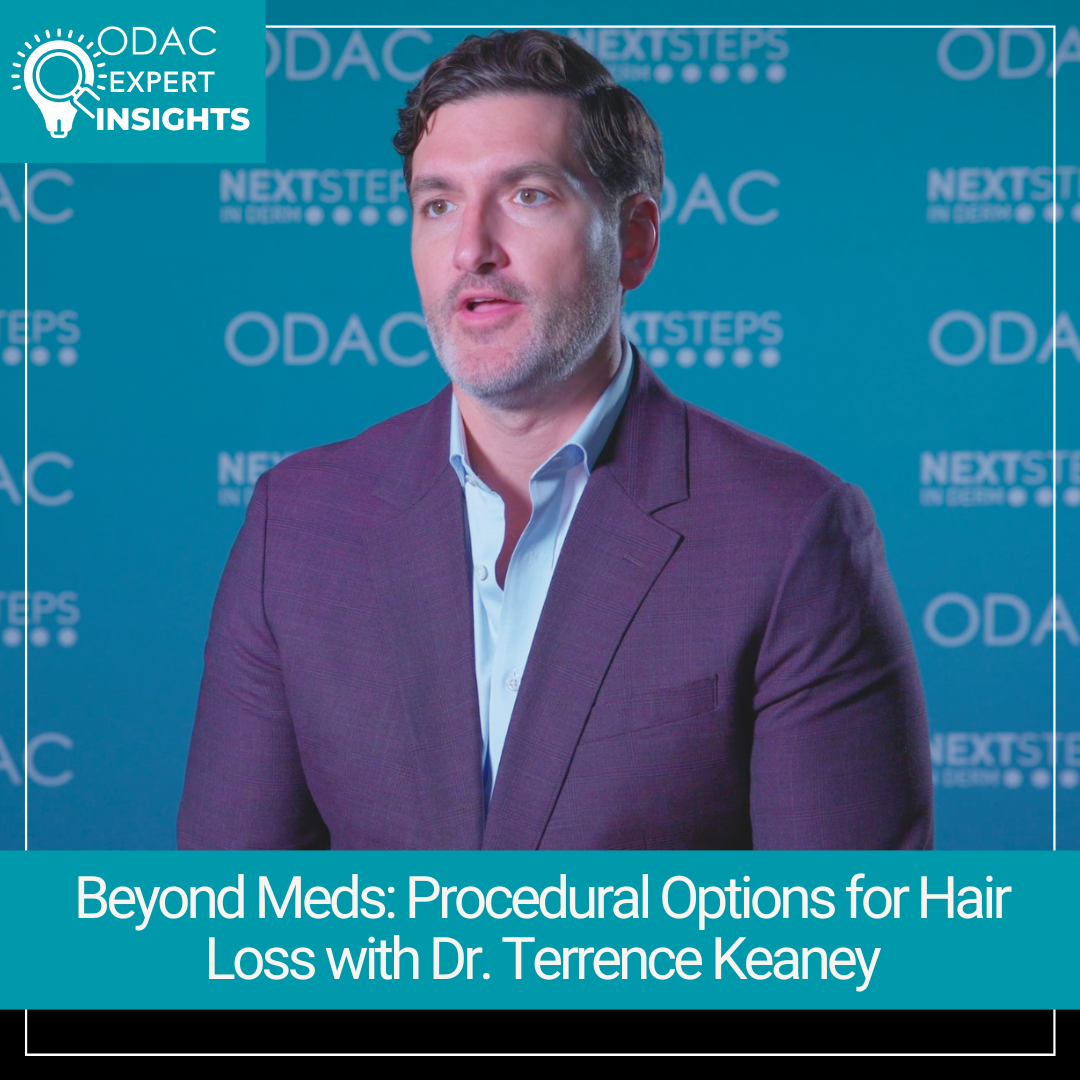While medications are the most common way of treating hair loss, Dr. Terrence Keaney wants dermatology clinicians to also consider procedural options. Dr. Keaney, associate clinical professor of dermatology at GW School of Medicine & Health Sciences, spoke with Next Steps in Derm, in partnership with ODAC Dermatology Conference. Watch as Dr. Keaney outlines the latest developments in regenerative medicine, low-level light therapy, and surgical restoration. Find out about PRF (platelet rich fibrin), which is a slightly modified version of platelet rich plasma. Hear Dr. Keaney’s experience observing patients who use at-home light devices for hair growth. Plus find out why Dr. Keaney thinks dermatology clinicians should consider adding robotic hair restoration into their practice.
Further Reading
If you want to read more about treating androgenetic alopecia, check out the following articles published in the Journal of Drugs in Dermatology:
ABSTRACT
Androgenetic alopecia (AGA) is the most common cause of hair loss in men and has limited treatment options. Minoxidil is a common therapeutic option for AGA patients because of its availability. Platelet-rich plasma (PRP) therapy is a newer option in AGA management with promising results that may be suitable for some patients. Despite a great prevalence of AGA outside the United States and Europe, there remains limited studies on the efficacy of PRP for AGA treatment. Our study’s objective was to compare the efficacy of PRP and minoxidil therapy for the treatment of AGA in a Pakistani population. 72 patients were included in this randomized control trial and were either treated with PRP or topical minoxidil. After 12 weeks of treatment, the hair pull test was performed and extracted hair was counted. We report a 91.7% negative hair pull rate in the PRP treatment group which was significantly greater than the 69.4% negative hair pull rate in the minoxidil-treated group. Our study suggests that PRP therapy demonstrates a higher efficacy compared to minoxidil for treating AGA, especially in our patient demographic. These results have the opportunity to improve patient compliance and overall satisfaction while offering an improved option in patients unsatisfied with topical minoxidil. Citation: Shah R, Asim M, Ouellette S, et al. A randomized control trial comparing the efficacy of platelet-rich plasma and 5% topical minoxidil for the treatment of androgenetic alopecia.
ABSTRACT
Androgenetic alopecia (AGA) in men and women is the most common cause of hair loss. Affected individuals may experience psychological distress and social withdrawal. Current treatment options for AGA, such as minoxidil and finasteride, vary in efficacy and have side effects. Platelet rich plasma (PRP) and photobiomodulation are among treatment options that have gained popularity in recent years. While less is known about the effectiveness of fractional lasers for combating hair loss, research suggests that by creating microscopic thermal injury zones, fractional lasers may cause an increase in hair growth from a wound healing process. In this study, we evaluated the efficacy and safety of PRP and 1550 nm fractional erbium-glass laser as monotherapy or combination treatment for AGA in 60 patients. All patients experienced improvement in AGA, but patients treated with the combination therapy had greater improvement in hair density. Overall, PRP and 1550 nm in combination or alone are good treatment choices for AGA, with no side effects.
Did you enjoy this video interview? Find more here.

